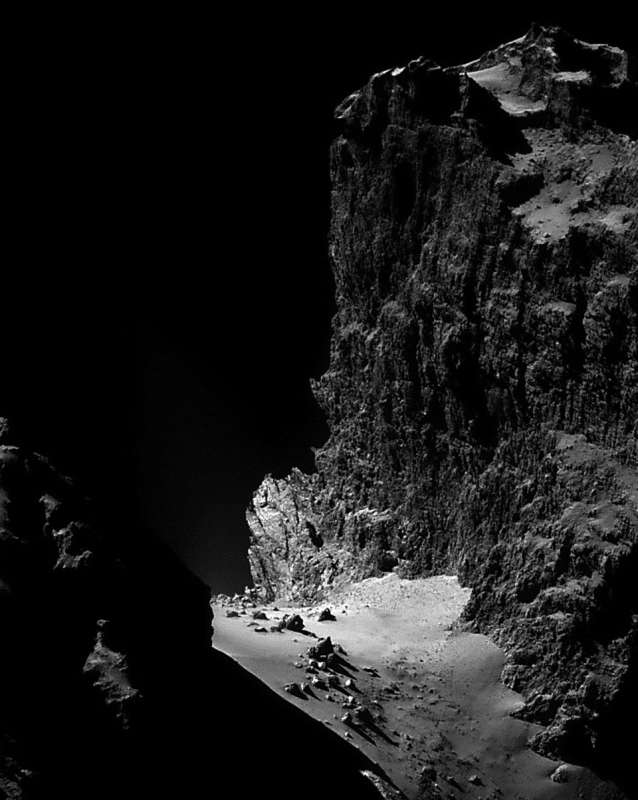Credit & Copyright: Stuart Atkinson
Explanation:
These high cliffs occur on the surface of a comet.
They were discovered to be part of the dark nucleus of
Comet ChuryumovGerasimenko (CG) by
Rosetta,
a robotic spacecraft
launched by
ESA which began orbiting the comet in early August.
The ragged cliffs, as
featured
here, were imaged by Rosetta about two weeks ago.
Although towering about one kilometer high, the low surface gravity of
Comet CG would likely make a
jump from the
cliffs, by a human, survivable.
At the foot of the cliffs is relatively smooth terrain dotted with
boulders as large as 20 meters across.
Data from Rosetta indicates that the ice in Comet CG has a significantly different
deuterium fraction -- and hence likely a different origin -- than the water in Earth's oceans.
The Rosetta spacecraft is scheduled to
continue to accompany the comet as it makes its closest approach to the Sun in 2015
August.
1999 2000 2001 2002 2003 2004 2005 2006 2007 2008 2009 2010 2011 2012 2013 2014 2015 2016 2017 2018 2019 2020 2021 2022 2023 2024 2025 |
Yanvar' Fevral' Mart Aprel' Mai Iyun' Iyul' Avgust Sentyabr' Oktyabr' Noyabr' Dekabr' |
NASA Web Site Statements, Warnings, and Disclaimers
NASA Official: Jay Norris. Specific rights apply.
A service of: LHEA at NASA / GSFC
& Michigan Tech. U.
|
Publikacii s klyuchevymi slovami:
komety - yadro komety
Publikacii so slovami: komety - yadro komety | |
Sm. takzhe:
Vse publikacii na tu zhe temu >> | |
